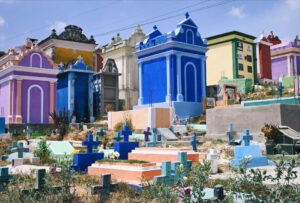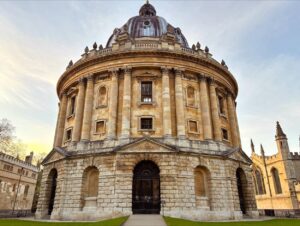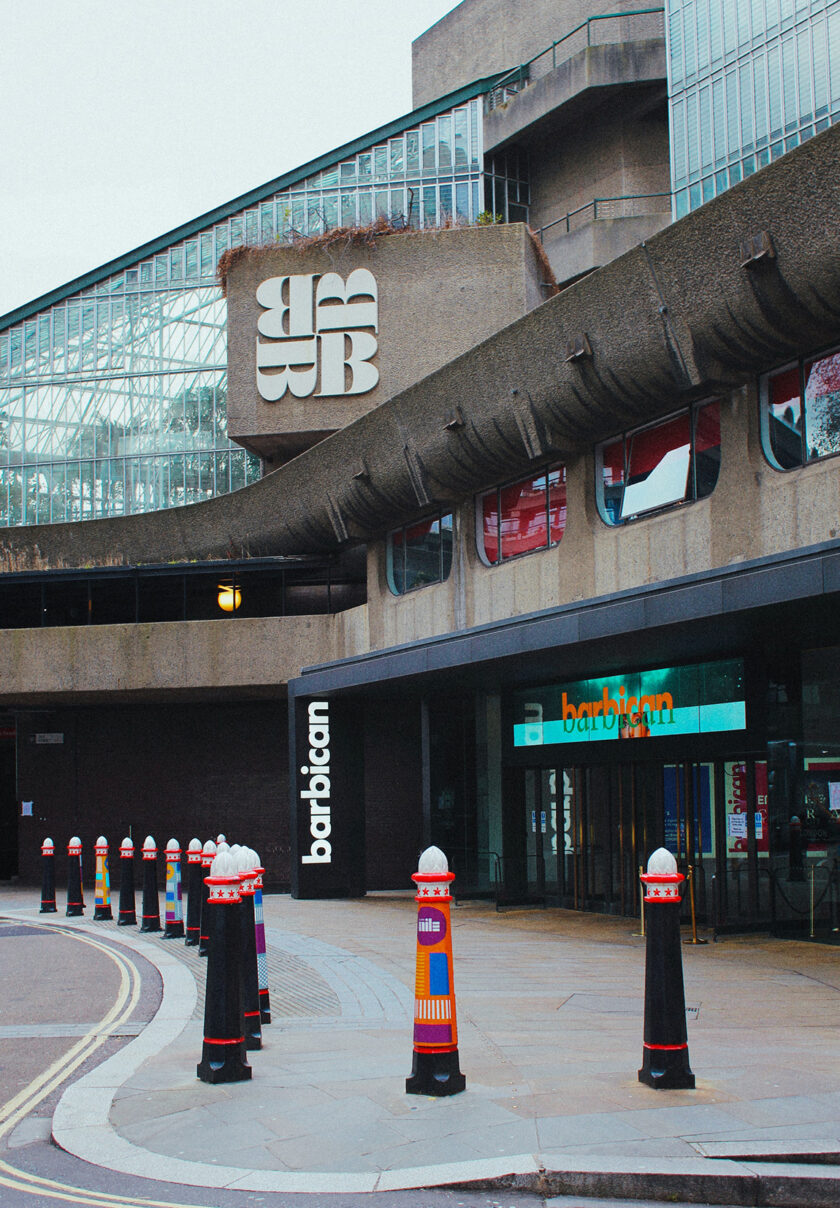
Whether you’re looking to experience world-class music, art, dance, or theatre, a trip to the Barbican has you covered. Its programme of cultural events always offers something original, inspiring, and soul-nourishing.
While the quality of their events are top-notch, however, the Barbican estate manages to stir strong opinion from the public in the looks department. Some view it as a triumph of Brutalist architecture and a symbol of post-war urban regeneration, while others see it as an eyesore against the backdrop of London’s skyline and a symbol of urban decay.
I belong to the camp of admirers, and this in part might also be due to having previously lived in a flat in Greenwich that was built by the same architects responsible for the Barbican. For reasons I can’t fully explain, I loved the flat as soon I stepped inside it. By no means was it the prettiest, largest, or cosiest, but the design was original and full of character and natural light.
Finally, after being on my list of things to do in London for years, I went along to one of the architecture tours of the Barbican.
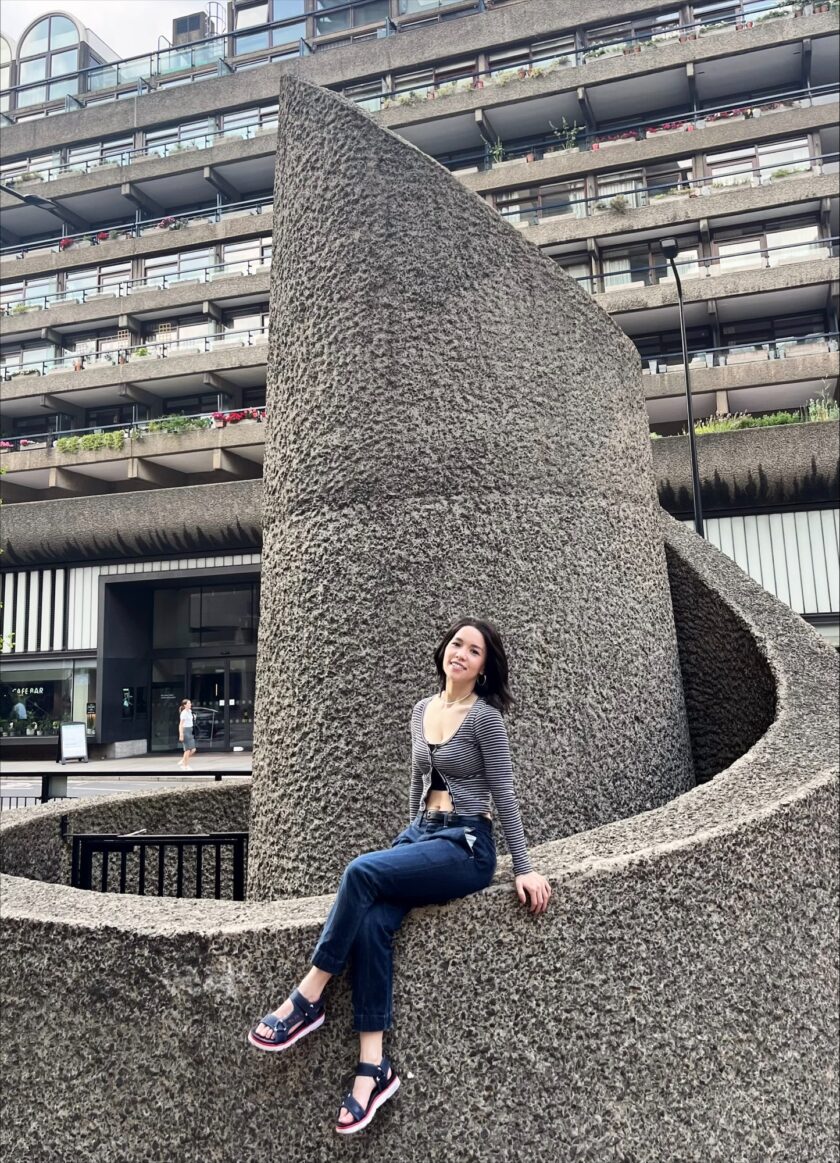
Architectural visions: a city within a city
The defining feature of the Barbican is its unabashed use of concrete. This architectural movement, known as Brutalism, gained prominence in the mid-20th century. Its name, derived from the French term “béton brut” (raw concrete), underscores the primary material used in its construction. It was a philosophical approach to architecture, aiming to provide simple, functional buildings which could accommodate plenty of inhabitants in an unfussy, practical way.
At the start of the tour I was quite surprised to learn that not everyone agrees with calling the Barbican a pure example of brutalism due to it being perhaps a little too fancy. Furthermore, the architects behind the design, Chamberlin Powell and Bon, never explicitly called themselves Brutalists.
Working with a site almost completely razed by WW2, the architects proposed a post war utopian ideal for inner-city living. A ‘city within a city’ that would be raised above street level and complete with vertical gardens.
While the original plans depicted a facade cladded with white marble, it soon proved too costly so under the advice of Ove Arup (the engineer behind Sydney Opera House) they switched to concrete. This decision proved structurally important as it made the complex significantly lighter for the ground to handle, while keeping down the bloating construction costs.
So while the original plans may have been much more ornate and decorative, the finished design definitely morphed into something a lot more brutalist than initially planned.
Building materials: from marble to concrete
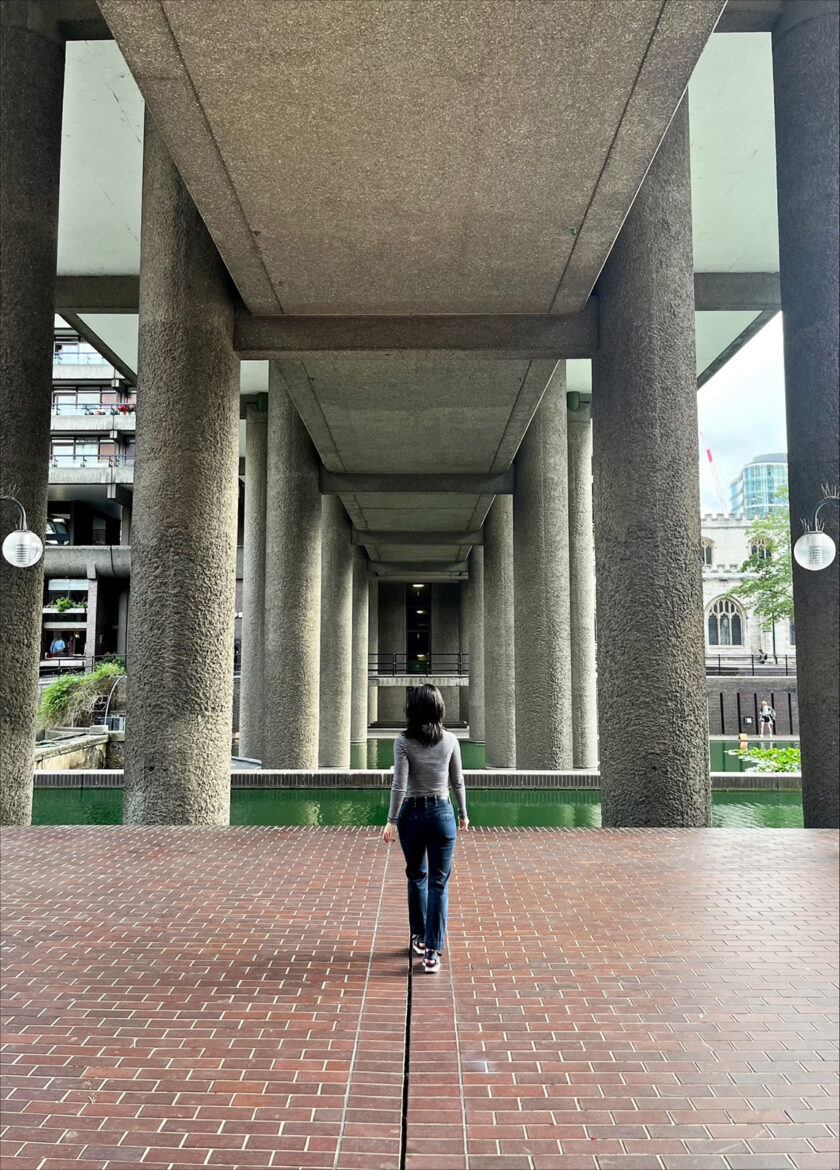
While white marble was ditched in favour for concrete, the designers wanted something more distinctive so came up with the idea of adding texture to the natural smoothness inherent with using concrete.
Getting the desired surface effect was incredibly labour intensive. Our guide took us behind the doors of a private tunnel that revealed various concrete prototypes that had been initially considered for the construction.
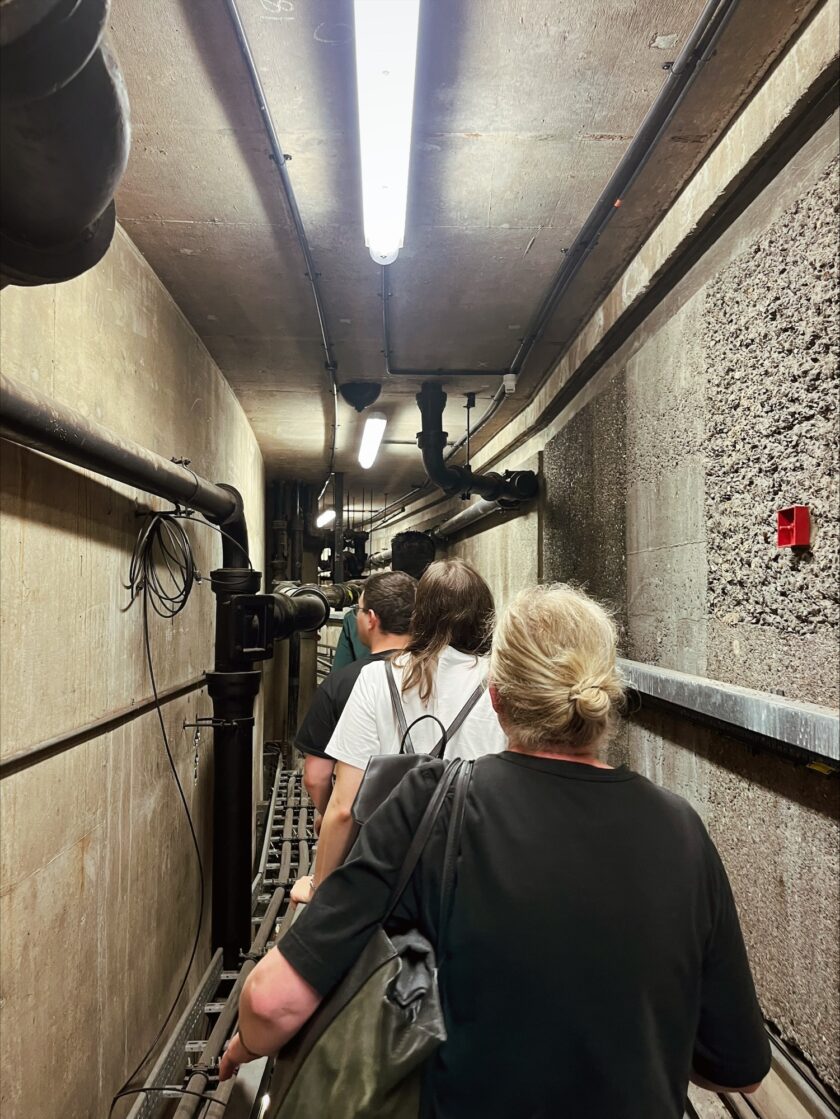
Although the concrete at the Estate was left exposed, it was not unfinished. After the concrete had dried for at least 21 days, workers used handheld pick-hammers to tool the surface and expose the coarse granite aggregate to give it the textured appearance we see today.
This applied technique was a revelation to me. I had simply assumed that the pitting effect was naturally occurring. It’s hard to fathom how long it must have taken on a complex of this scale. I guess attention to detail is everything, and the architect’s felt the manual labour was worth it.
Estate life: vertical monoliths & aesthetic codes

The estate is made up of three tower blocks, thirteen terrace blocks, two mews, and two blocks of townhouses, with around 4,000 residents.
The three tallest towers, named Shakespeare, Lauderdale, and Cromwell, dominate the skyline, their sheer verticality creating a sense of grandeur and monumentality. Apartments have individual balconies with a view that stretches far across London and the Barbican maze below. At the time of erection, they were the tallest residential flats in London, defying conventional expectations of city living and preconceived notions of beauty in architecture.
Many of the terrace blocks were envisaged to be just like traditional terraced London houses. The ‘ground’ level at the front onto the street (though in this case the ‘street’ is the Barbican ‘podium’ which I’ll get to in a minute), and a basement which opens at a different ‘ground’ level onto the garden at the back.
The tour doesn’t grant access inside any of the apartments, but we walked past many of the terrace blocks, while our guide brought to life the setting with many anecdotes about living in the Estate.
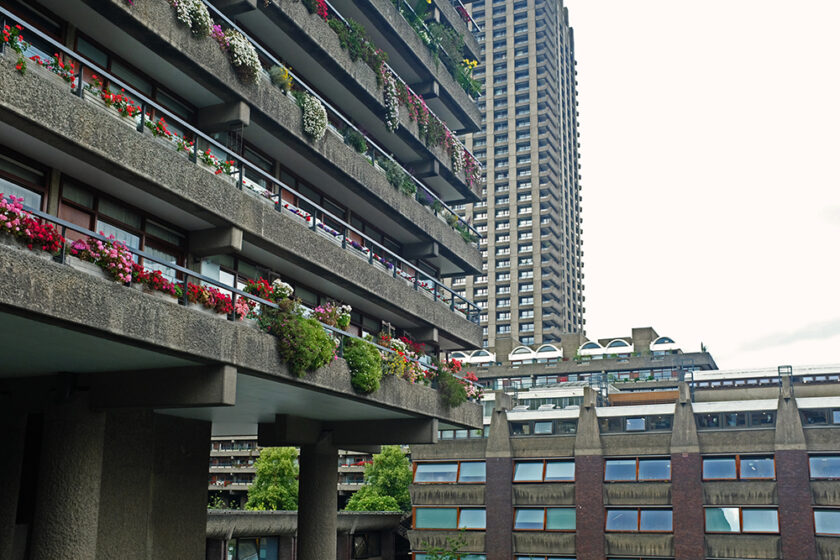
Notably, the blocks are incredibly uniformed. The exterior, including windows and doors are all identical with their original fixtures. This is down to its Grade-II Listed status that make it difficult for owners to carry out cosmetic changes.
Somewhat humorously, I heard that at one point in time, owners were required to adhere to a strict aesthetic code. For example, only white curtains should be showing from the large windows and red geraniums hanging from the balcony gardens. I guess there must have been a revolt, as I spotted some flowers that breached this code. Gasp!
The podium: a communal haven with lakes, walkways & gardens
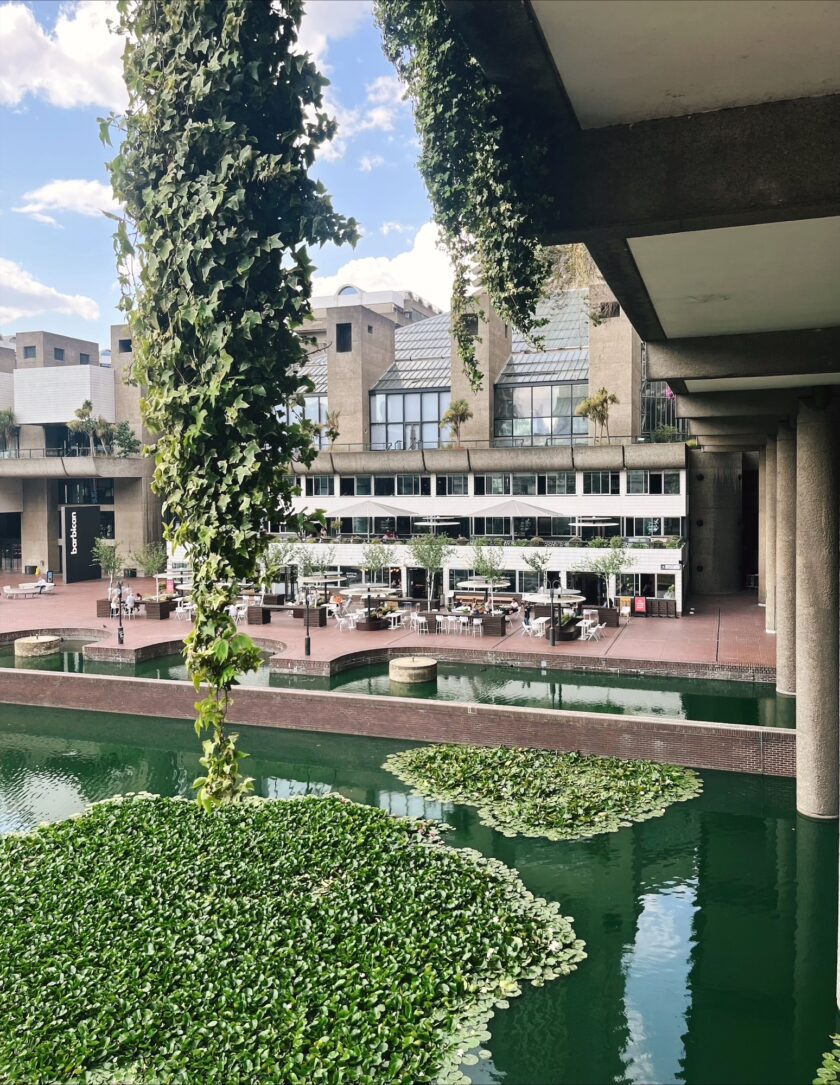
Beneath the towers lies the Barbican’s podium, a sprawling expanse of interconnected buildings that house an array of amenities. The design of the podium prioritises functionality and community, with a network of walkways, communal gardens, and even a serene lake.
This interconnectedness is a reflection of the architects’ vision of creating a self-contained microcosm within the city, where residents can live, work, and socialise without ever leaving the complex.
One thing I’ve always wondered about is the colour of the lake. It always looks unusually vibrant. Particularly under the sun, you could even call it garish. Well, on the tour I discovered the colour is actually down to adding vegetable dye. If it wasn’t dyed, you’d be able to see reflections of the grey buildings surrounding it, which could give away the illusion of depth. It couldn’t be dug any deeper either because the Circle Line is directly underneath it.
Need directions? Don't worry, everyone gets lost in the Barbican
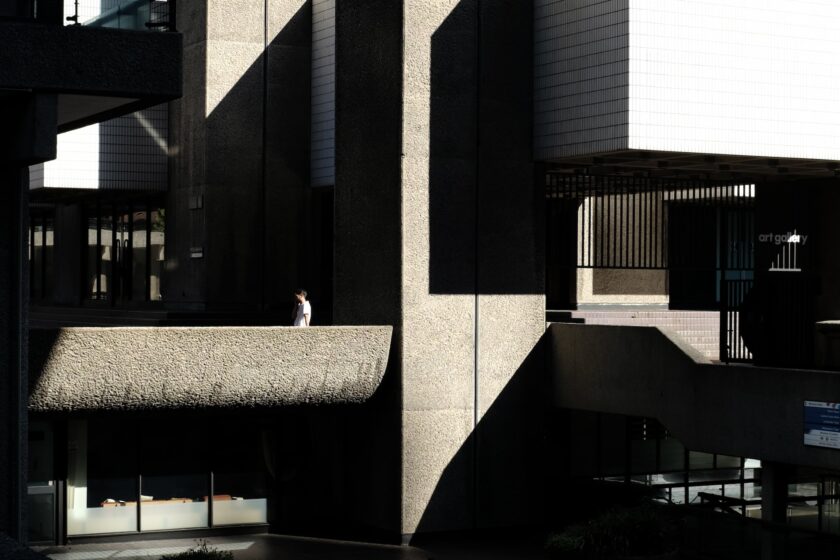
If you’re a fan of football, the name George Best will certainly be familiar to you. The larger than life character once called the Barbican home. However, after failing to locate his place within the concrete labyrinth one too many times after a night on the razz he decided enough was enough, and moved!
Most people will tell you that they have gotten lost in the Barbican. It’s inevitable. I’ve lost my bearings enough times stone cold sober to know it wouldn’t end well for me if I threw alcohol into the mix!
Barbican Conservatory: a hidden oasis
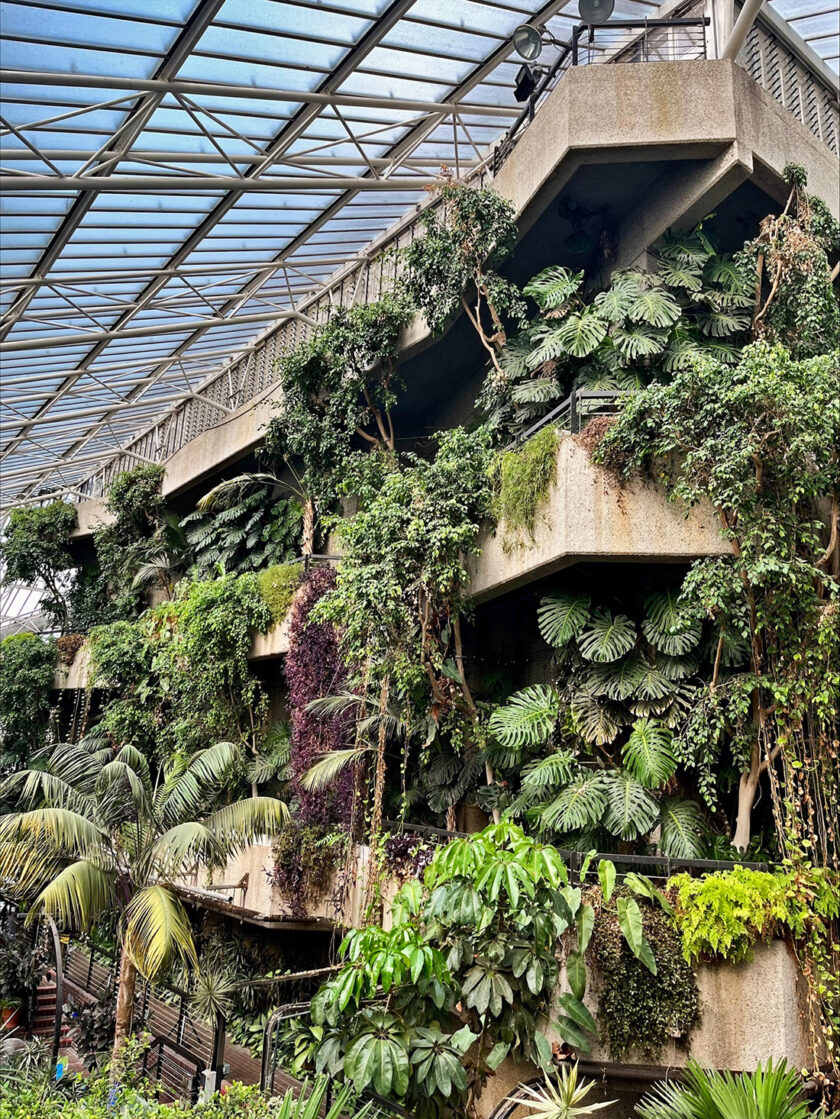
The Barbican conservatory is the second biggest conservatory in London, after Kew Gardens’ Princess of Wales Conservatory.
Entering this verdant sanctuary feels like stepping into a secret world of a time long forgotten (minus a few other visitors here and there). Sunlight filters through the glass roof, casting dappled patterns across an eclectic collection of wiry creepers and plants from around the globe.
Cultural epicentre: from music to art, and from theatre to literary talks
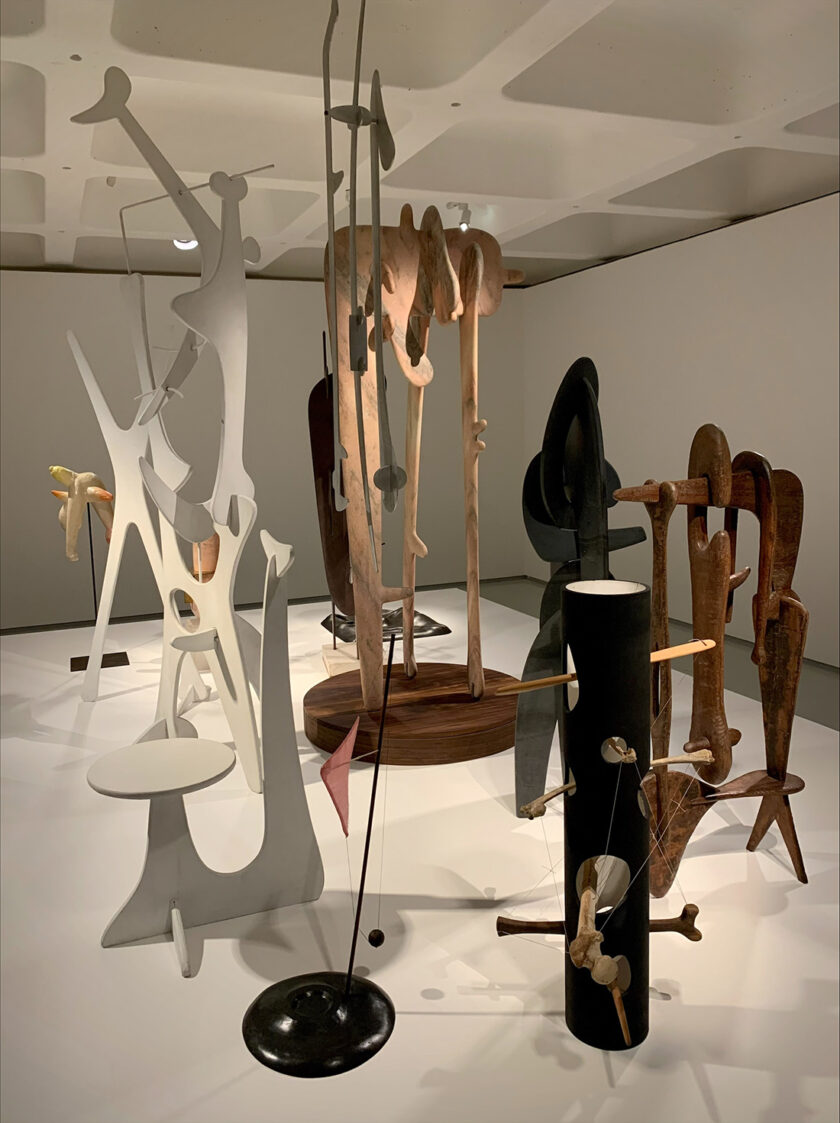
At the heart of the Barbican complex lies the Barbican Centre, a beacon for arts and culture enthusiasts. The architects ingeniously incorporated this cultural institution into their design, making it a central focus of the estate. Inside, it houses a world-class concert hall, theatres, art galleries, and cinemas, offering a diverse array of cultural experiences to residents and visitors alike.
Some of my favourite ever concerts have been at the Barbican – Steve Reich, Thom Yorke, Philip Glass, Tim Hecker, the list goes on. Take a look at what’s going on and you’ll surely find something to your taste most days of the week.
Within the grounds is also the Guildhall School of Music and Drama, one of London’s leading music conservatories, and I was charmed to learn that the columns on the building resemble tuning forks.
A living legacy: The Barbican Today
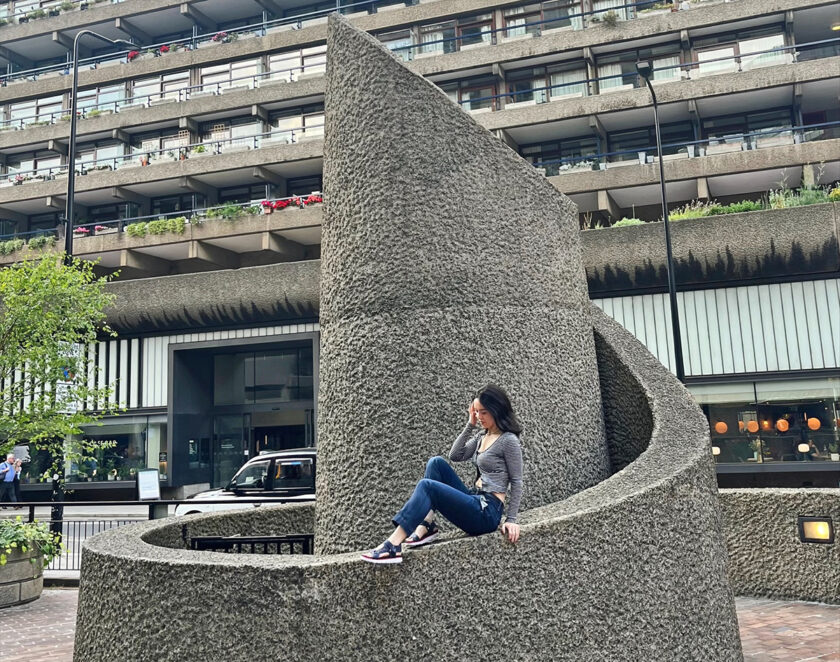
The Barbican Estate stands as an architectural marvel that defies easy categorization. It challenges preconceived notions of beauty in architecture, provoking contemplation and debate.
Over the years, concerted efforts have been made to preserve and restore the Barbican. As we speak, new designs are being made to improve upon what has already been made, ensuring that it continues to be a living testament to Brutalism’s profound impact on urban architecture and culture.
Visiting the Barbican offers an opportunity to appreciate the boldness of design, the intricacies of urban planning, and the enduring spirit of urban regeneration. It serves as a living reminder that even in the midst of an ever-changing metropolis, architectural innovation can find its place and leave an indelible mark on the cityscape for generations to come.
And finally, would I recommend joining an architecture tour of the Barbican? Definitely. Though it doesn’t entirely matter if you don’t manage it. The doors to the Barbican are always open to those who simply wish to meander around this maze-like complex.


